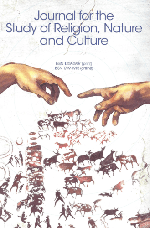2010 – Living on the Edge | University of Western Australia, Perth (Dec 16-19, 2010)
The Conference Program is available below. To view the original Call for Papers, see here.
Conference Report by Sylvie Shaw, The University of Queensland
(Winter Solstice, 21 December 2010)
The conference opened on a warm sunny afternoon at the most beautiful King’s Park on the edge of Perth city. We were welcomed to country by Dr Richard Whalley, a Nyoongar man, and Director of Aboriginal Productions and Promotions, and were introduced to the city by the Mayor of Fremantle, Dr Brad Pettitt, previously Dean of Sustainability at Murdoch University.
As we sat encircled within a natural amphitheater and surrounded by glorious eucalyptus and magpie birds feeding their young, Dr Freya Mathews from Latrobe University addressed conference delegates about, in part, the need for a diversity of new stories to counter the current overriding approach of scientific discourse. The theme of the paper was: Over the edge: extinctions and the limit of ethics. Freya proposed that a ‘universal story which can be seen to subtend all religions and all ethics, and is in fact the very ground of meaning, is coming into view…It is none other than the life-story of the earth.
The keynote speaker the next morning was Professor Clive Hamilton from the Australian National University. His focus was ‘The metaphysical ethics of geoengineering.’ Clive provided a glimpse into the future as inventors and venturists in our time contemplate the expansion of technologies to solve the planet’s problems — once relegated to the imagination of science fiction. Using a range of philosophical ideas and practical applications to counter the rising tide of environmental devastation, Clive journeyed between pessimism and hope and asked ‘whether climate change and geoengineering represent not just a dangerous stage in the evolution of human society but a change in the nature of the Earth itself, so that the destiny of the Earth and if its human inhabitants form a unity.
Ideas overflowed throughout the conference with keynotes and papers that addressed not only the interconnection of religion, nature and culture, but framed this field, in large part, within an interdisciplinary framework. This was aptly demonstrated by two keynote presentations, one by Dr Mary Zeiss Stange from Skidmore College (in the US) who addressed the very edgy topic, ‘Hunting the edges: the intersection between hunter-conservationism and green environmentalism.’ She argued that ‘the idea of the hunter is more relevant than ever’ in view of the combination of serious issues affecting both humanity and the planet including climate change and childhood obesity. She further observed that hunters are becoming increasingly involved in environmental education and activism.
The second keynote paper of the late afternoon session was presented by Professor Jan Boersema, from the University of Amsterdam on: ‘Easter Island: If no collapse, what else? Cultural adaptations while living on the edge.’ He shed new light on the deafforestation of Rapa Nui (Easter Island) and questioned the earlier theorizing of the decline of the population there. Perhaps there is a message, he suggested, from this isolated Pacific island for ‘the present day debate on sustainability, quality and the role of religion.
Each day opened and closed with such thought-provoking keynotes, beautifully delivered, developed and debated. On the conference’s third day we were blessed with two powerful presentations. The morning began with Prof. David Tacey from La Trobe University revealing the intricate philosophical, psychological and spiritual layers in a presentation titled, ‘At the edge of a new animism: Australian spirituality, ecopsychology and the animation of the world.’ He outlined the influences in his own thinking about the nature are the ecopsychology of Carl Jung and James Hillman, and the animistic cosmology of Aboriginal Australian cultures. He described the process for reenchanting the world though a return of sacredness and the recognition of ‘the survival value of animism as a way of nurturing the human soul and protecting the soul of the world.
Following a jam-packed day of discussion, conversation and great food for thought, the day closed with an inspirational performance of a new opera composed by Professor Anne Boyd from Sydney University/the Conservatorium of Sydney. A masterful addition to our conference, the performance was the premier of the opera Kabbarli at Ooldea (where Kabbarli refers to ‘Dreamtime, wise-woman or grandmother’). Delegates were treated to an emotionally strong and evocative rendition of the central aria of the opera. The opera is based on the life of Daisy Bates, an enigmatic and ‘contested’ character in Australia’s history. Anne told the story of the opera’s musical composition, while libretto author, Emeritus Professor Bob Reece from Murdoch University, told the story of Daisy Bates’ eccentric life in the Western Australian desert supporting Aboriginal people whom she imagined were a dying race. Isolated at the historic waterhole of Ooldea, Bates’ home was a tent where she lived for 16 years between 1919 and 1935.
The addition of this ground-breaking event was not only inspired, it demonstrated the creativity and ingenuity of conference director Yamini Narayanan. Yamini’s work was the heart of the conference. Her organisation and care enabled a harmonious melding of delegates’ ideas, discussions and workshops, at once congenial and relaxed, but also at the cutting edge of scholarly and transdisciplinary discourse. She orchestrated a stimulating range of thought, theory, practical endeavour and social connections which resonated among all participants.
The leafy luscious grounds of the University of Western Australia, and its location on the edge of the Swan River, provided the backdrop for the conference and the place also played a role in building an enharmonied social-ecological cohesion among the conference delegates.
Thank you to all who participated, and especially to the president of ISSRNC, Kocku van Stuckrad for his excellent leadership and to conference director, Yamini Narayanan who brought everything together with magic.










